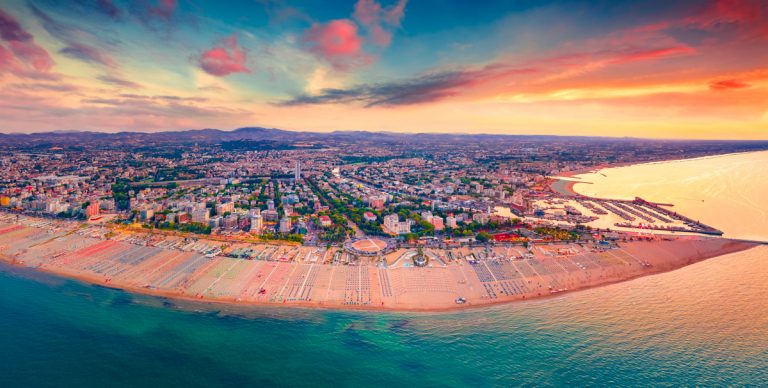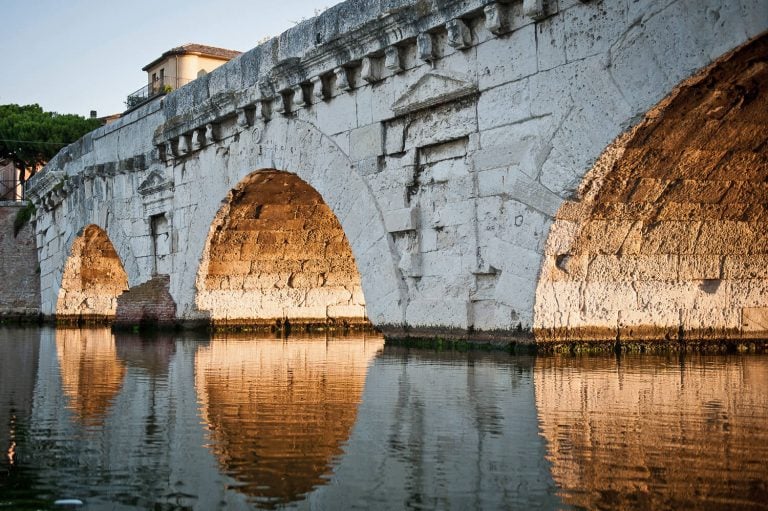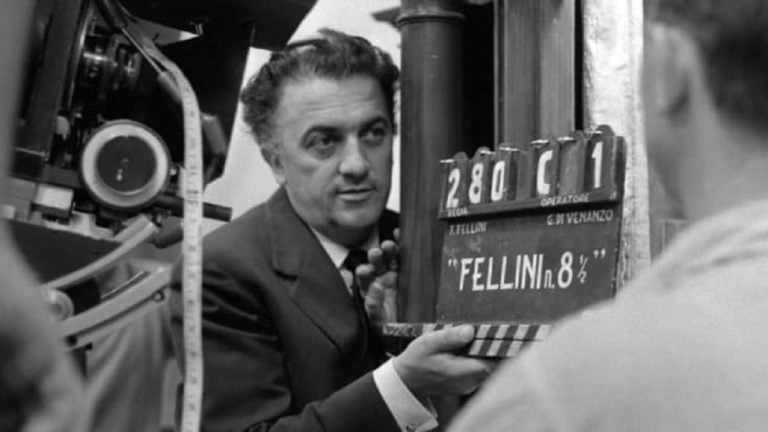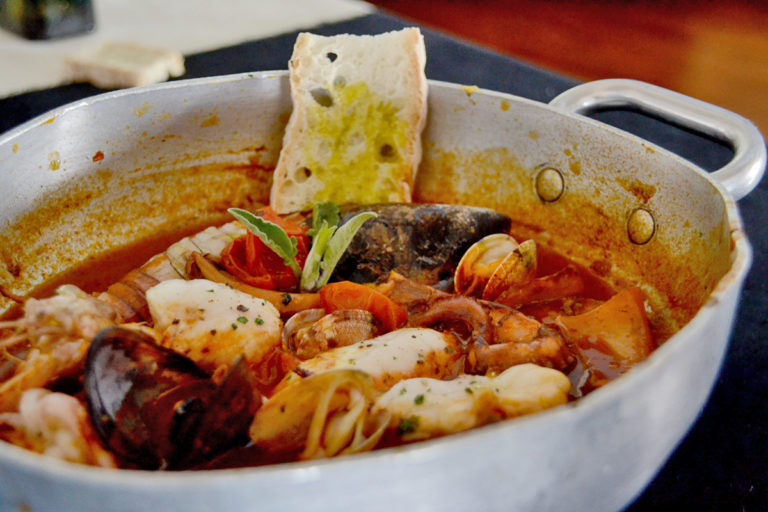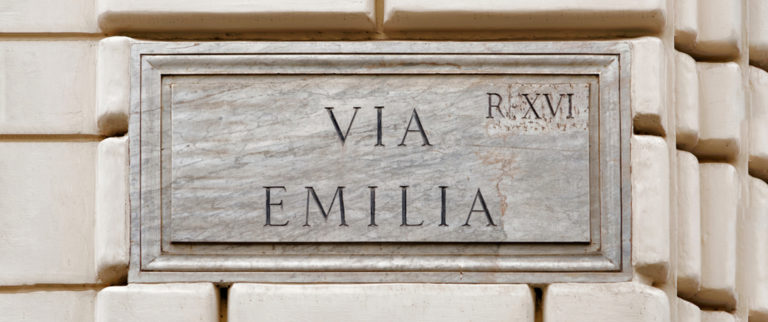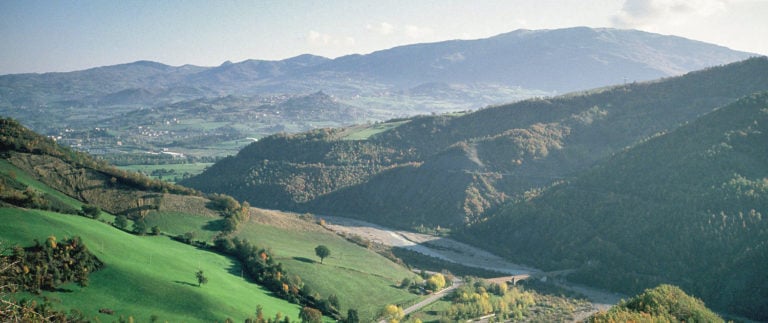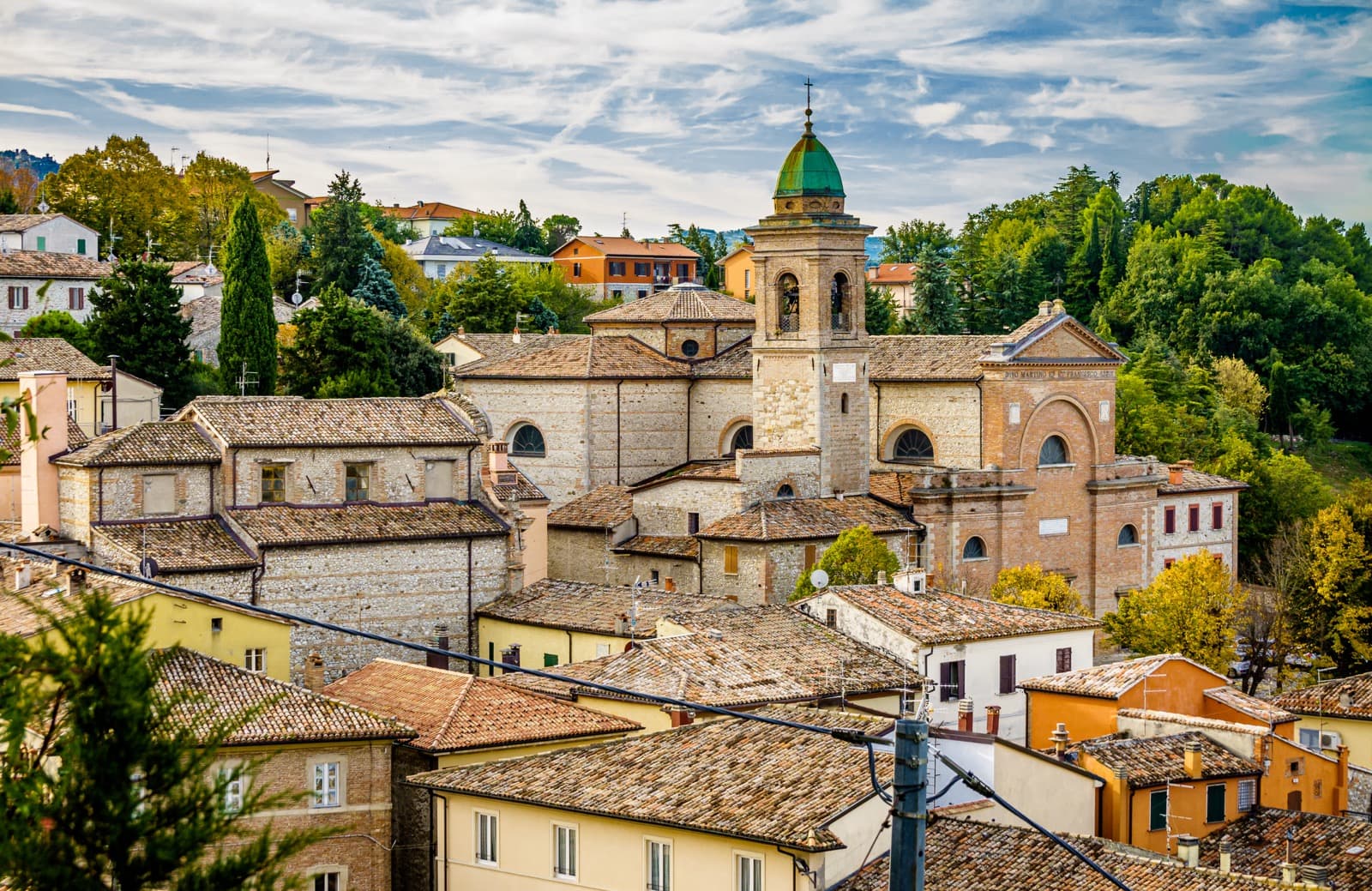
Time
72 h
Among enchanting views and archaeological treasures, loud neighbourhoods and fascinating piazzas, RIMINI is probably one of Emilia-Romagna’s most beautiful cities.
Dynamic, people-friendly, lively and always up-to-date, this pearl of the Romagna Riviera is worldwide known as the centre of fun, especially in warm summer nights.
A bright skyline made up of hundreds of hotels frames the golden beaches, with charming views on the blue Adriatic Sea. Moving towards the centre, inside what remains of the ancient walls, the beating heart of the city reminds us of its origins.
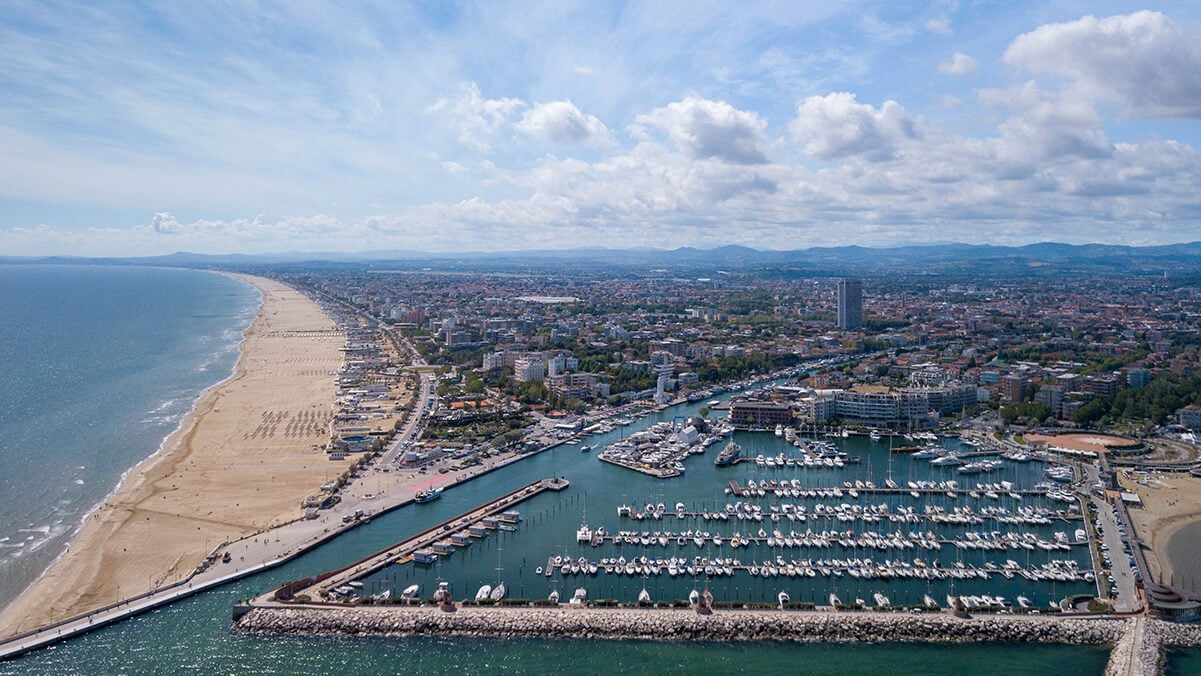
As many of Italy’s most important urban centres, also Rimini is deeply rooted in history, back to the times of the Romans, who founded it in 268 BC.
Walking around the historical centre, it is possible to see ancient remains in several places, a true open-air museum allowing you to discover some of the city’s most important historical evidences in a walking distance.
The itinerary starts from the Arch of Augustus, built in 27 BC as a monument celebrating Emperor Octavian and great point of access to the route connecting Rimini to Rome through via Flaminia.
Continue with Bridge of Tiberius, starting point of the famous Via Emilia, which is still walkable after two thousand years.
In Piazza Ferrari, just a few steps away, is one of the city’s most significant examples of ancient art. We are talking about the Surgeon’s Domus, an imperial Roman domus that can be visited by walking on boardwalks suspended on mosaic pavements, medieval tombs and stunning remains.
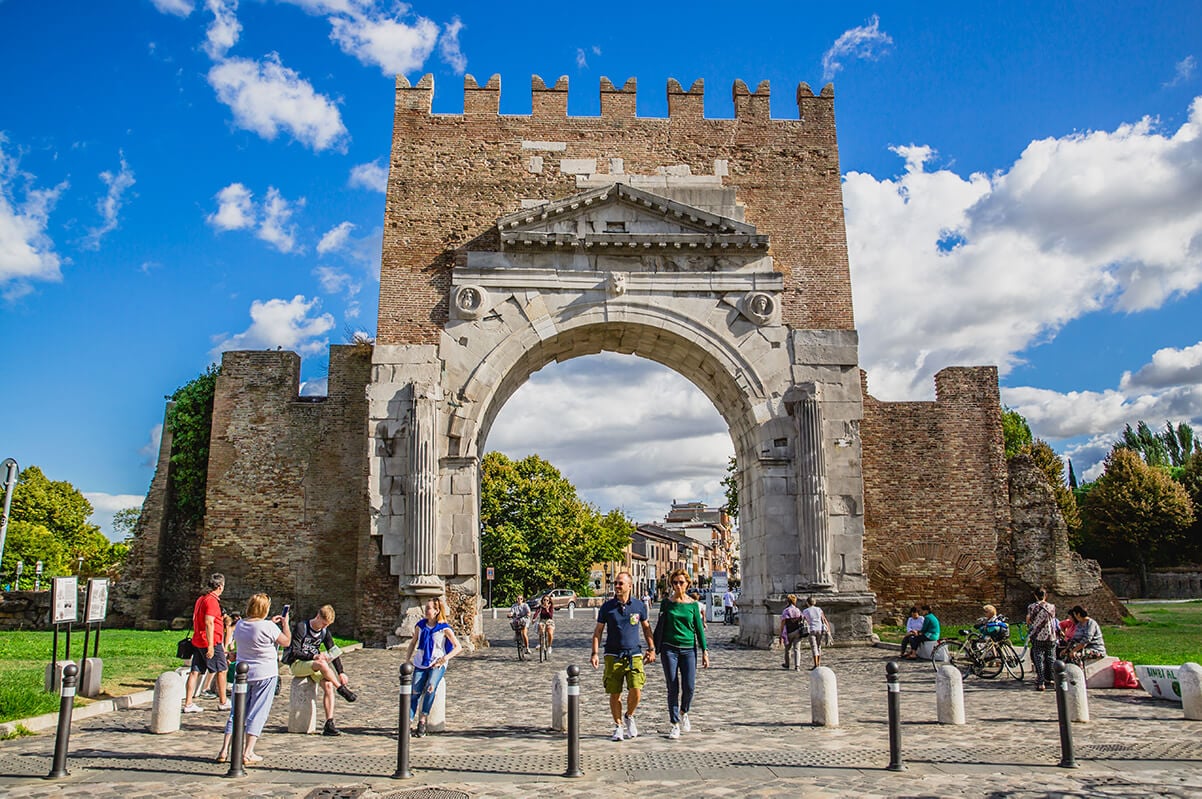
Over the centuries, Rimini has been the destination of and dominated by many peoples. Byzantines, Lombards, the House of Malatesta, the Venetian Republic: each one of them has left a trace and surprising works on the urban fabric, many of which are still visible in the historical centre.
During the Medieval and Renaissance period, Rimini was the city of the House of Malatesta, one of Italy’s most influent families.
Today, it is still possible to see monumental memories of that time, thanks to the construction of Castel Sismondo – a residence-fortress strongly wanted by Sigismondo Pandolfo Malatesta – and of Tempio Malatestiano – whose realisation in the current aspect was commissioned to Leon Battista Alberti, and hosting today fine pictorial works as Giotto’s crucifix or works by Piero della Francesca, Giorgio Vasari and Agostino di Duccio.
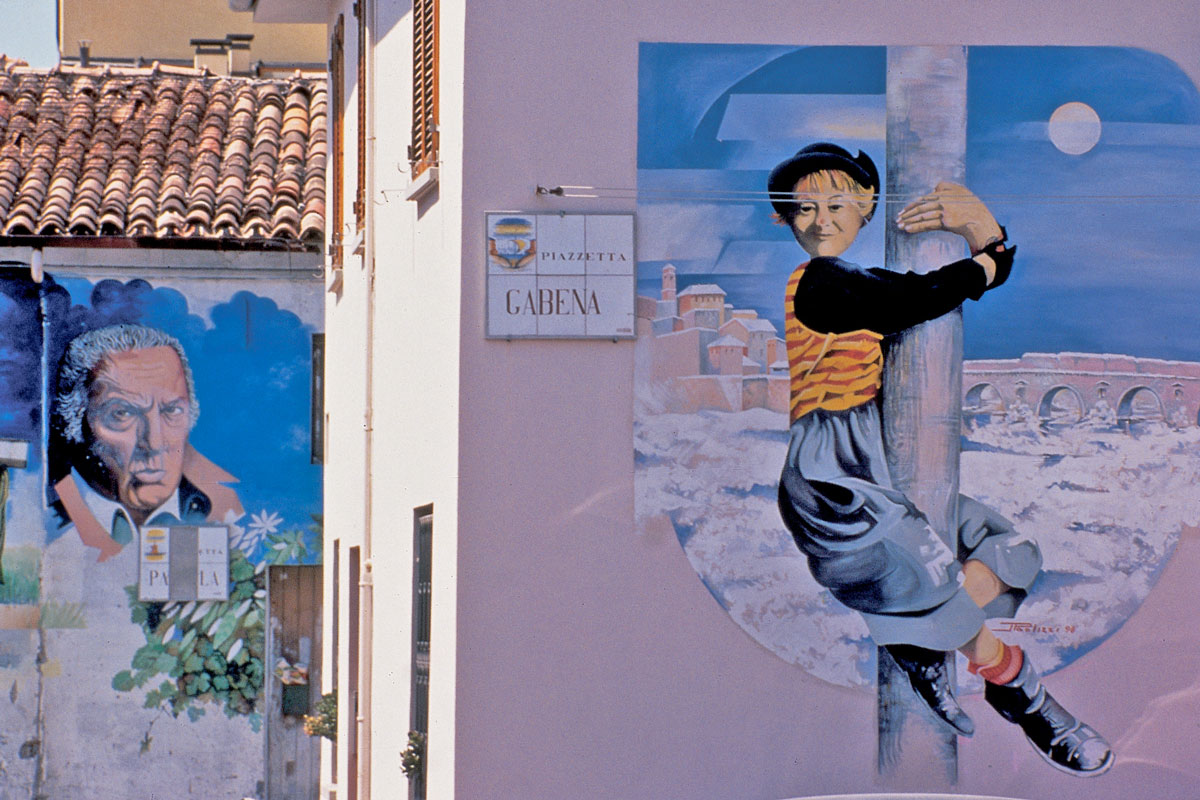
But Rimini is also a glorious city of fishermen and merchants, a city that was able to repeatedly reinvent and test itself over time.
You just need to walk around the stands of the old fish market among wine-bars and pubs or stroll through the streets of the charming Borgo San Giuliano to realise it. With clothes hanging in the sun, small pastel-coloured houses, great restaurants and creative street art works in its alleys, this small neighbourhood is particularly charming.
But Rimini means much more than all this. Rimini means Federico Fellini, as Italy’s most important film director was born here; Rimini means tradition and good food; Rimini is the undisputed capital of relaxation, active holidays and obviously nightlife and centre of primary importance for fairs and congresses.
MUSEUMS
Hosted in a former Jesuit convent, the Museum of the City of Rimini is located just a few steps away from the Surgeon’s Domus.
We highly recommend a visit here. You will travel through time and discover some of the most important artistic expressions related to Rimini. You will find works by Ghirlandaio or Guercino, highlights of the 14th-century Rimini School and of the House of Malatesta; and finally, a valuable archaeological section.
The museum network in Rimini is much articulated, and includes many different collections and artistic expressions that are worth knowing about.
Start with PART, the new museum of contemporary art of Rimini, hosted inside Palazzo dell’Arengo and the 14th-century Palazzo del Podestà – right in the heart of the city – and completed by the charming Giardino delle Sculture (lit. sculpture garden).
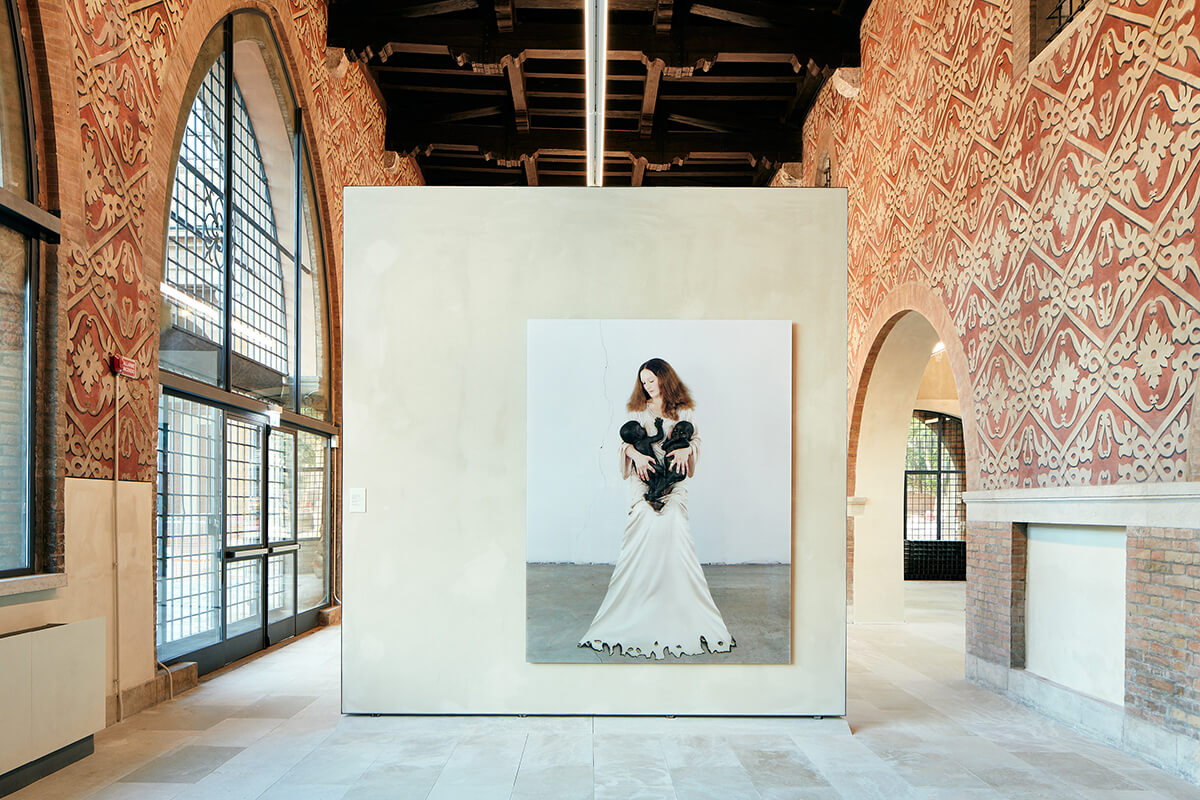
Then there is the new FM – Fellini Museum, a diffused museum complex of new conception, considered the greatest museum project dedicated to the genius of Federico Fellini, which involves three places of the city: Castel Sismondo, Palazzo del Fulgor and Piazza Malatesta.
If you are keen on transoceanic cultures, you cannot miss the Ethnographic Museum, located within a 10-minute drive from the centre of the city, on the hill of Covignano. Here, thanks to ethnographic collections, you will get to know the views (or approaches) with which the western peoples have related to the art of “others” over time.
If you instead love ancient earthenware and marbles, you may be interested to a visit to the visitor centre of ARimini, hosting a multimedia exhibition to the discovery of the city and its territory.
BEYOND THE CITY
The hinterland behind Rimini is not less beautiful than the city and offers interesting destinations.
In less than 30 minutes, you can reach for example the Republic of San Marino, Europe’s third smallest country.
Alternatively, you could always have a walk in the nearby town of Riccione: whether in winter or in summer, the historical centre and Viale Ceccarini i always rich in nice shops and passers-by at any time of the day.
Motor and high-speed lovers cannot miss a tour of the Misano circuit and of the museum dedicated to the legendary Marco Simoncelli, a few kilometres away from Rimini.
Finally, those who are in love with hamlets, good food and slow tourism should definitely consider a walk to the discovery of the wonderful valleys of the river Conca and Marecchia, both dotted by an infinite number of interesting centres, such as Saludecio, Mondaino, Montefiore, Montegridolfo, Pennabilli, Sant’Agata Feltria, San Leo and Verucchio, just to mention some of them.
HOW TO GET TO RIMINI
By plane
The city has its own airport, just outside of the city: the “Federico Fellini” International Airport.
The “Guglielmo Marconi” International Airport of Bologna is located 120 kilometres away, and can be reached in about 1 hour and 30 minutes.
Outside of the region, the Ancona International Airport can be reached in about 1 hour.
By car
Rimini can be reached with the A14 Bologna-Ancona highway, in which the A1 del Sole, A21 Torino-Piacenza and A22 del Brennero highways (www.autostrade.it) all merge.
Coming from Venice, the fastest route is the 309 Romea state road (SS 309), in which the roads coming from Padova and Ferrara merge.
From the South, in addition to the A1 and A14 motorways, the highway E45, which connects the neighbouring Cesena to Rome and the 16 Adriatica roadway through the Apennines.
By train
Located on the line Milan-Bari, the Rimini railway station is connected to the main Italian cities: www.trenitalia.it
By boat
Who comes from the sea can moor at the Canal Port or use the services of the new Darsena.
Author

Davide Marino
Davide Marino was born archaeologist but ended up doing other things. Rational – but not methodic, slow – but passionate. A young enthusiast with grey hair
You may also like

Interested in our newsletter?
Every first of the month, an email (in Italian) with selected contents and upcoming events.
Via Emilia. History and origins of a region in 10 points
by Davide Marino /// June 29, 2018
Dolce Vita in Valmarecchia: an itinerary among hamlets and hills
by Elisa Mazzini /// June 7, 2016
Emilia-Romagna for kids: Rimini and surroundings
by Elisa Mazzini /// January 13, 2023
